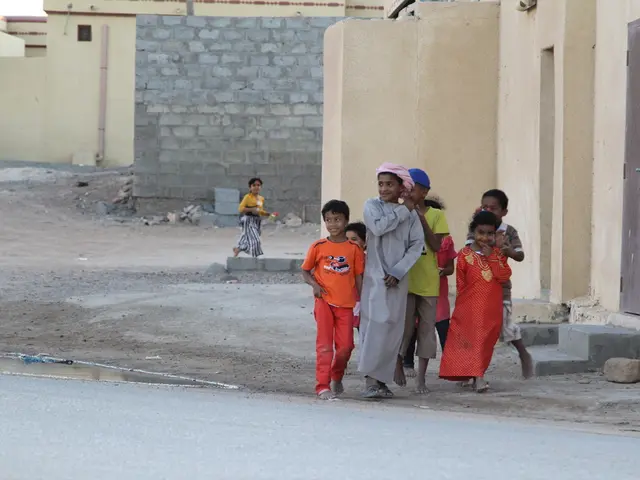Cats Not Believed to Remain in Pakistan Found Alive in Photographs Again
**Rare Wildcat Sightings in Pakistan Stimulate Conservation Efforts**
In a significant development for wildlife conservation in Pakistan, images of two elusive small cat species - the Asiatic caracal and the sand cat - have been captured in Kirthar National Park, located on the border of Karachi in Sindh province.
The sightings, made by the Indus Fishing Cat Project, have brought renewed attention to these endangered species and the threats they face in their habitat. The sand cat, previously listed as "possibly extinct" in Pakistan, was confirmed to still survive in the country, albeit in small numbers and with very little known about its populations.
The caracal, on the other hand, is estimated to have a dwindling population of approximately 100 individuals in Pakistan, making it a rare and vulnerable species. The latest image of the caracal is considered very rare visual evidence of the species and offers firm evidence that caracals are still present in the country, although it's unclear if a self-sustaining population exists.
Unfortunately, one juvenile caracal was killed in the national park by local people, highlighting the challenges these small wildcat populations face from human activities. Retaliatory killings pose another major threat to small cats in Pakistan, making conservation efforts all the more crucial.
The sighting of the sand cat in Pakistan is particularly significant as it was practically unknown in that part of its range. The discovery could help build a case for a national conservation strategy, targeting threats such as habitat degradation due to overgrazing and retaliatory killings.
Kirthar National Park, home to both species, faces threats from sand and gravel mining activities that negatively impact habitat quality, water sources, and generate pollution. Conservationists are concerned about the impact of these activities on the small wildcat populations.
Local NGOs are engaged in ongoing conservation efforts, focusing on direct conservation actions such as awareness programs and compensation schemes to reduce retaliatory killings. The focus of conservation work by Shaikh's organization is on direct conservation action and expanding awareness programs.
Shaikh hopes the new photo records for both small cats will stimulate scientific interest and raise awareness among local communities and authorities. Ricky Reino, an Asiatic caracal species monitor, notes that caracal numbers are less in Asia than in Africa, and within Pakistan, the species is considered critically endangered.
The conservation status of both species in Pakistan remains precarious. While the sightings offer hope, the populations are small and face serious threats from habitat disturbance and human activities. The ongoing development in Karachi, leading to the conversion of its green belt to residential and commercial areas, further compounds the challenges these species face.
As the world focuses on protecting charismatic big cats, only around 3% of global felid funding is currently directed at the more than 36 species of small cats. The new images from Pakistan could help raise awareness and secure more funding for the conservation of these elusive and endangered species.
- The renewed attention to endangered small cat species like the Asiatic caracal and the sand cat in Pakistan's Kirthar National Park highlights the importance of ecology research in wildlife conservation.
- The discovery of the sand cat in Pakistan, a species previously considered possibly extinct, could contribute valuable data to environmental science and climate change research, as well as health-and-wellness since our understanding of various species can impact our mental health.
- TheAsiatic caracal, with an estimated population of approximately 100 in Pakistan, is a rare and vulnerable species, making it a significant focus in the field of conservation, as well as science and fitness-and-exercise since healthy wild populations can serve as indicators of environmental health.
- The unprovoked killing of a juvenile caracal in Kirthar National Park emphasizes the need for mental-health awareness programs among local communities, as well as proper education on the importance of wildlife conservation.
- Skin-care products, being made from various natural sources, could potentially be impacted by the dwindling wildlife populations, particularly if ingredients like exotic oils are derived from endangered species.
- The overgrazing of habitats in Kirthar National Park and pollution from sand and gravel mining activities could negatively impact climate and climate change research by altering the way these ecosystems function.
- Nutritionists and dietitians could indirectly play a role in wildlife conservation by advocating for sustainable consumption practices, reducing the demand for products derived from endangered species and increasing support for conservation efforts.
- If the new images of the Asiatic caracal in Pakistan stimulate scientific interest and funding, it could also positively influence the economy by creating new employment opportunities in the related sectors like conservation, research, and eco-tourism.






